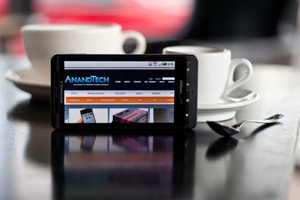I think I’ve given up on the HTC Evo. The reviews are a little too mixed with not enough bang for buck over an iPhone 4. The criminal charges against the Evo’s battery life seem to be sticking.
But Motorola’s Droid X, Verizon’s answer to the Evo, looks like it has some potential. First off, I’m not seeing the battery life complaints. Second, you’re only in for an extra $20 to use it as a mobile hotspot, albeit for only 2GB a month. The upside is that none of your hotspot bytes count against your mobile smartphone limit, which is unlimited for $30 a month.
The general consensus seems to be it’s a good hardware package, decent call performance, with good battery life, but the UI falls a little short. Pricing is closer to the iPhone than the Evo, with similar bandwidth limitations. Seems like a safe app phone choice if you’re not into Apple, AT&T, or 4G.
Here’s the reviews I’ve seen so far:
ArsTechnica was mostly positive. The overall package reviewed well, but various fit, finish, camera, and UI coherence dings prevented them from raving.
The Droid X is an impressive device that delivers a lot of compelling functionality. It couples outstanding hardware specifications with a great battery life and some useful software customizations. The product’s weak areas are in the incompleteness of its custom software stack, its general lack of polish relative to other custom Android environments like HTC Sense, and its noisy camera hardware and user-unfriendly camera software.
Gizmodo was generally down. The writing of the review was a bit over the top:
As a pure expression of the limits of mobile hardware and industrial design, the Droid X is kind of a beautiful thing. But that’s about the only good thing about the Droid X.
The software—a discordant melange of the not-so-fresh Android 2.1 and various bits of the Blur “social networking” interface from Motorola’s lower-end Android phones—is the shudder-inducing poster child for the horrors that can occur when most hardware companies try to make software. It’s ugly, scattershot, and confusing. It feels almost malicious.
AnandTech was a bit more positive than Ars. Amazingly they also soundly beat Ars on thoroughness and attention to detail in the review, not that Ars was slouching. However, it is a bit more geeky, with a decided emphasis on performance benchmarks.
If you’re on Verizon and prefer the larger screen, the Droid X takes our pick for the best Android phone on the market today. All we really need is a good Nexus One successor for those users who want something a bit smaller, and maybe an entirely new form factor for the ultimate smallest in devices.
Engadget’s review was first out the block, somewhat thinner than the others, and slightly lukewarm.
Cast in that light, the Droid X becomes a much less magical phone than the Droid was. It’s good, and it’s a pretty enjoyable execution of Android 2.1, but it’s not a must-have phone — especially in light of the Droid Incredible and the upcoming Droid 2. From a hardware perspective, this phone is pretty much a bang-on execution of what a high-end mobile powerhouse should be, but Motorola clearly still has work to do in order to play in the same software league as HTC does with Sense. If it can get there — or heck, if it can just offer this phone with stock Froyo — you’ve got perhaps the best Android phone ever made.
